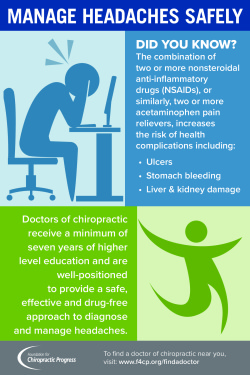What Your Neck And Back Pain Says Regarding Your Wellness: Common Conditions And Signs
What Your Neck And Back Pain Says Regarding Your Wellness: Common Conditions And Signs
Blog Article
Writer-McCabe Eason
If you're experiencing neck and back pain, your body might be trying to tell you something greater than just discomfort. The way your back really feels can provide valuable clues about your overall health. Comprehending the details type of pain you're really feeling and any kind of coming with signs is essential to unraveling the mystery behind your pain. Let's check out the common conditions and signs and symptoms related to various kinds of pain in the back to shed light on what your body might be signaling.
Kinds Of Back Pain
When it pertains to pain in the back, there are numerous kinds that you may experience. One usual kind is muscle discomfort, often brought on by overuse, pressure, or injury to the muscle mass and tendons supporting the spinal column. This kind of discomfort can vary from moderate pain to extreme and debilitating discomfort.
One more type is nerve discomfort, which can arise from conditions like herniated discs or sciatica. Nerve pain usually provides as a sharp, shooting experience that emits down the leg.
Joint pain in the back can originate from concerns like joint inflammation or sacroiliac joint disorder. This kind of discomfort is commonly felt in the reduced back and can be worsened by certain movements.
Additionally, neck and back pain can be related to architectural problems such as back stenosis or vertebral cracks. Understanding the kind of neck and back pain you're experiencing is important in figuring out the ideal therapy and monitoring strategies.
Common Effects to Look For
Moving past the different sorts of pain in the back, it is very important to identify the usual signs and symptoms that can indicate underlying concerns.
Consistent back pain that aggravates with motion or during the night can show an extra major problem. Tingling or prickling in the legs or feet, specifically when accompanied by weakness, may point to a nerve-related problem. If https://www.healthline.com/health/back-pain/why-is-my-sciatica-not-going-away experience sudden weight-loss together with pain in the back, it could be a sign of a much more systemic problem.
Take note of any kind of modifications in bladder or bowel feature, as this could be linked to spinal cord compression. Fever, chills, or evening sweats along with back pain may signal an infection. Keep an eye out for discomfort that emits down one or both legs, potentially a sign of sciatica.
Wellness Issues Linked to Pain In The Back
If you experience pain in the back, it's critical to understand the possible wellness conditions linked to this discomfort. Neck and back pain can be a sign of numerous underlying issues, including muscle mass pressures, herniated discs, osteo arthritis, spine constriction, and even conditions like kidney rocks or infections.
Recommended Webpage are common and typically arise from raising heavy items or abrupt motions.
Herniated discs happen when the soft tissue in between vertebrae protrudes, causing nerve irritability.
Osteoarthritis, a degenerative joint disease, can cause neck and back pain as cartilage material wears down.
Back stenosis, the constricting of the spinal canal, can put pressure on nerves.
Kidney rocks may trigger intense back pain if they move into the urinary system system.
Infections like spinal osteomyelitis can additionally materialize as neck and back pain. Understanding these possible health and wellness problems can aid you seek ideal healthcare and monitoring for your back pain.
Final thought
So, following time your back injures, focus on the kind of pain and coming with signs and symptoms. Maybe a signal from your body about underlying health and wellness conditions like muscle stress, nerve issues, joint problems, or even architectural concerns. By recognizing these indicators, you can take proactive steps to resolve the source of your back pain and boost your total health and well-being.
